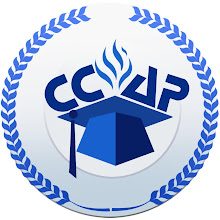By Richard Vedder
In a pre-industrial society, some of the most productive workers are those between 18and 24 years of age. They are at the peak of their lives physically, and brawn trumps brains in most areas of human endeavor. While that is not true of today's America, persons in that age group are still energetic and capable of doing a lot of relatively productive work. Instead, a large proportion of them go on to college, to enhance their "human capital." It is allegedly a long term investment.
It is a tragedy, then, that their talents and brainpower are woefully underutilized in these productive, formative years. Why do college kids party and drink so much? Partly because they are bored - because the academic life poses insufficient challenges to keep them working at a pace resembling that of 18 to 24 year-olds who are in the work force - who party and booze less, on average.
You might say: where is the evidence? The answer is supplied, again, by the National Survey of Student Engagement (hereafter Nessie), which released its latest annual report a few days ago. Nessie is voluntarily administered by several hundred institutions at all levels of the academic hierarchy, although the more prestigious research universities use it less than less distinguished master's institutions or liberal arts colleges. Lots of students are surveyed, and some colleges are allowing the results to be published. Nessie publishes results for the aggregate sample.
Students are asked about the "hours per 7-day week spent preparing for class (studying, reading, writing, doing homework or lab work, analyzing data, rehearsing, and other academic activities)". For the entire Nessie sample of freshman or senior students (the results were virtually identical): 43 percent indicated they spent
ten hours a week or less on these activities. The median number of hours worked appears to be 12, and 17 percent of students spent
five hours a week working or less - the same proportion of freshman spending over 20 hours a week (20 percent of seniors worked 20 hours a week or more).
Add to that 16 hours a week in class --a generous estimate, since most kids skip at least some classes. Twelve hours of out-of-class work (the median) plus 16 classroom hours is 28 hours. Assume two 16 week semesters. Students work 28 hour weeks for 32 weeks a year typically, or 896 hours annually, less than one-half what their high school graduates counterparts in the work force are doing. To be sure, many of the college students also work several hundred hours a year in mostly menial jobs. The median hours annually worked or in school might hit 1,500 --still low by American workplace standards.
Half of college seniors have
never written a long paper (20 pages or more) while in college. Several of my senior students tell me they have NEVER written a blue book (essay) examination in college (they do with me!!).
Meanwhile, the proportion of college students who are not highly literate has fallen sharply since the early 1990s if the Department of Education literacy survey data are to be believed. On Thursday, the Intercollegiate Studies Institute is going to release the results of the latest Civil Literacy Test it administers, and, if past results are any indication, it will not be a joyous celebration of the accomplishments of college students.
Meanwhile, as indicated yesterday, grade inflation continues at America's universities. In the College of Education at my school, it is so endemic that grades are totally meaningless --if you can breathe successfully into a mirror, you automatically get an A if you are an Elementary Education major (what does that mean for our future generation of children educated by these non-challenged future teachers?). Shame. Shame. Shame. We are running country clubs for the affluent and paying the managers of those clubs (AKA university presidents) huge salaries. Isn't about time to say: enough is enough!!!
To be sure, there are some schools that maintain rigorous standards, and today's best students are as good as ever. My Whiz Kids --uber bright college seniors for the most part --are the best group of kids I have ever had work with and for me. My daughter got a great education at Northwestern by working hard, as did my son at Ohio University. But we have a huge proportion of kids that are unchallenged by college and whose capacity for personal growth is not being reached. It is time for a change. If Mr. Obama truly wants to help the disadvantaged in society, he would worry less about their getting into college, and more about what they learn when they get there.
.jpg)



